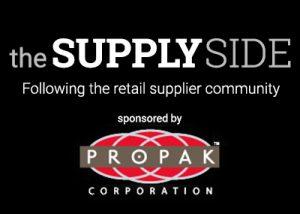The Supply Side: Walmart U.S. gives suppliers new order fulfillment guidelines
by February 23, 2017 10:30 am 4,197 views

Editor’s note: The Supply Side section of Talk Business & Politics focuses on the companies, organizations, issues and individuals engaged in providing products and services to retailers. The Supply Side is managed by Talk Business & Politics and sponsored by Propak Logistics.
–––––––––––––––––––––
Walmart U.S. recently restructured its replenishment division in an effort to better streamline communication and troubleshoot issues that cause out-of-stocks and other inventory concerns.
Last week Wal-Mart told its suppliers attending the Supplier Forum there will be new guidelines on how the retailer will measure its “On-Time-In-Full” (OTIF) deliveries, scrapping the old Supply Chain Reliability Program and scorecard. Wal-Mart told suppliers it’s shooting for higher in-stocks, improved sales, and lower store inventory. (Talk Business received a transcript from the forum which is the basis for this report.)
Suppliers were given a grace period until August to work with their assigned replenishment teams to meet the new OTIF objectives. For suppliers who ship in full-truckload the retailer set a 75% OTIF threshold. The previous requirements were 90% with a one-day window for perishables and a four-day window for food, consumables and general merchandise. Walmart U.S. had previously told suppliers it would require a 95% OTIF with 1 day window for perishable and foods/consumables with 95% OTIF and two-day window for general merchandise.
Consultants who spoke with Talk Business & Politics said the 95% OTIF guidelines were not attainable for many suppliers, especially those who consolidate and use third-party options or Walmart’s consolidation system because the suppliers often lost track of the shipments once they were picked up from their warehouses.
ORDER ISSUES
Those shipping less-than-truckload and using consolidation had similar 95% goals, but Walmart recognized this as unsustainable. The retailer asked that they look at their present OTIF score and shoot for a 10% improvement by August with the minimum of 33% OTIF, according to slides shown to suppliers by Wal-Mart execs at the recent forum.

The old Supply Chain Reliability scorecard merely told suppliers what percentage of shipments were delivered early, delivered late and orders deemed not full. With that info the retailer assigned an OTIF score but suppliers were often unable to diagnose product delivery issues.
Wal-Mart charges suppliers a 3% non-compliance fee on orders not delivered in full or on time, even though the problem might not have been the supplier’s fault or within their control. For instance one LTL supplier said their OTIF score was 36% and above the 33% minimum requirement, but with the new tool provided by Wal-Mart they could see that about 5% of their orders were not filled in full, around 8% of the orders were late arriving. Combined, around 13% of the lost opportunity was the fault of the supplier. The tool also revealed nearly 3% of orders were wrongly canceled by the system, nearly 12% of the orders were delivered early by Wal-Mart to the store from the distribution center, and 34% of the time Wal-Mart’s transportation delivered late to the stores. The new tool found that roughly 50% of the time the issue was on Wal-Mart’s end of the supply chain and the supplier would have a hard time correcting it even had they known.
CHANGES TO HELP SMALLER SUPPLIERS
This step back by Wal-Mart to give suppliers better tools and added time for compliance was well received in the supplier community. Wal-Mart is admitting some fault to the lack of compliance in OTIF and that’s a big step suppliers say doesn’t often happen, according to supplier consultants.
Several consultants said changes in the replenishment structure were a step to helping suppliers. The new OTIF guidelines seem to demonstrate Wal-Mart’s willingness to try and fix the problems. Suppliers also praise the retailer for the visibility into their supply chain. One supplier said they were facing a six-figure fine because of a shipping error that is not solely their fault. Wal-Mart is the largest customer for most suppliers and such fines have largely been seen as a cost of doing business. Wal-Mart said it will begin charging fines of 3% to suppliers not in compliance with the new OTIF guidelines by the August deadline. A year from now Wal-Mart expects full truck suppliers to be at 95% OTIF and LTL suppliers to see a 20% improvement with a minimum score of 36%.
“Trying to control your shipments once they got into Walmart’s system was like trying to control Congress. This new replenishment structure with dedicated members to track transportation and now this online tool in Retail Link could be a game changer for small to medium-size suppliers,” said VendorMaster CEO Jami Dennis, who was contacted for comment on this issue.
Wal-Mart execs also outlined for suppliers the impact of better OTIF scores. The retailer said one supplier began the new system and saw a 77% increase in OTIF scores within six weeks by using the cross functional replenishment team, looking at the root cause of their problems and working with the retailer and carriers to reset expectations and accountability.
